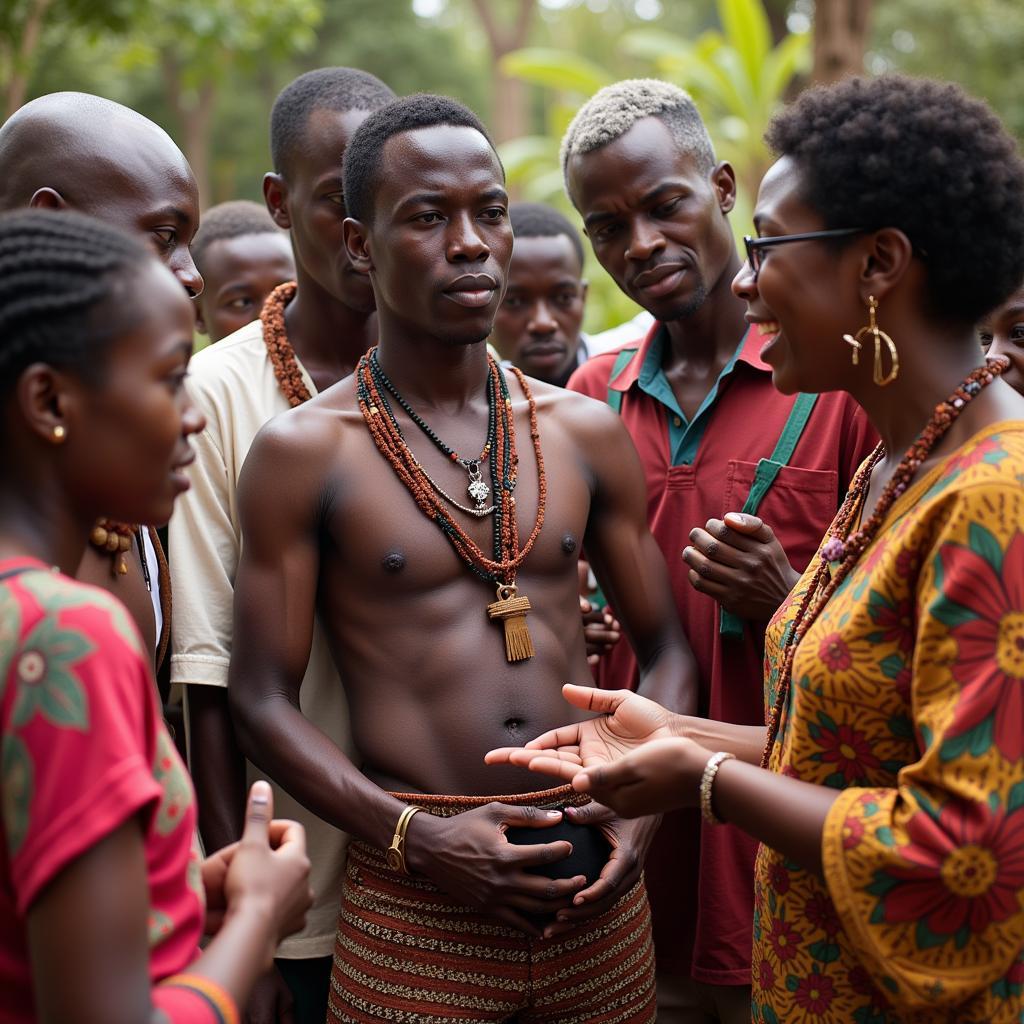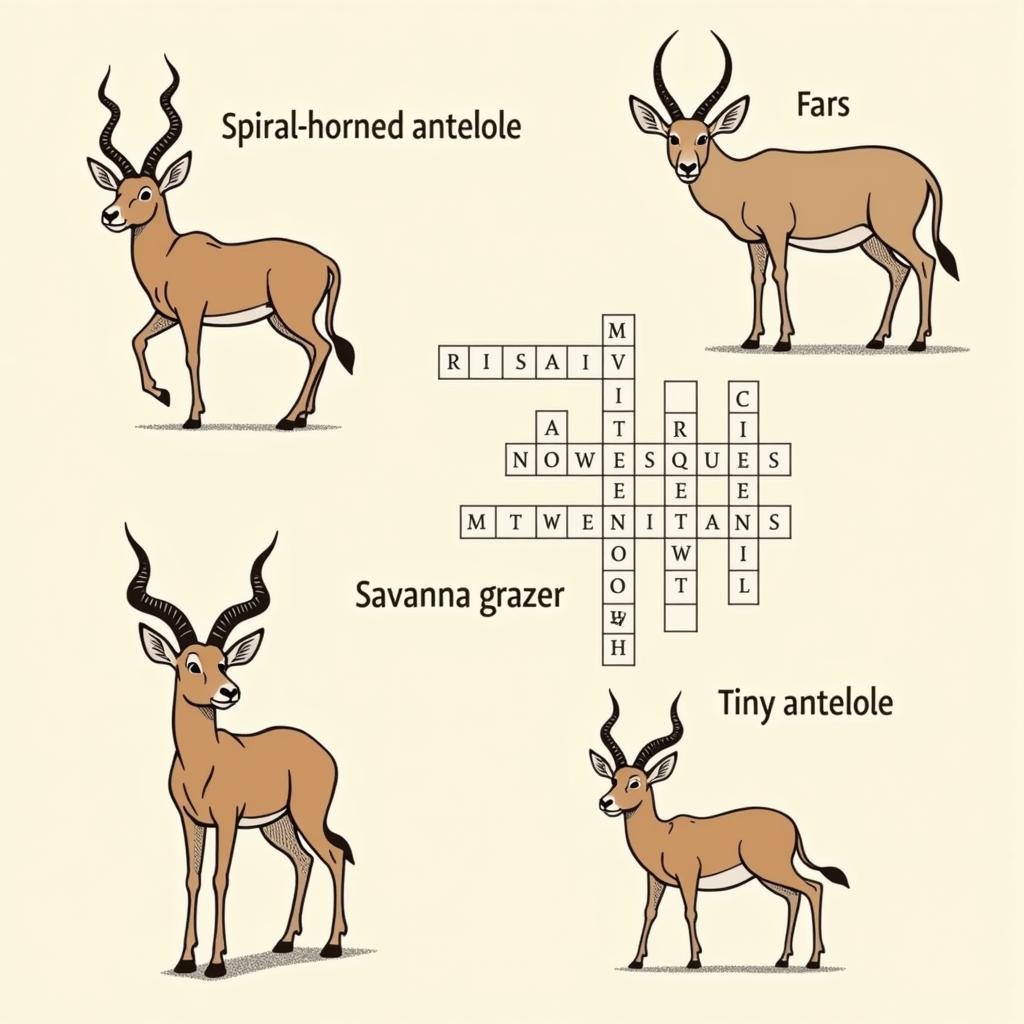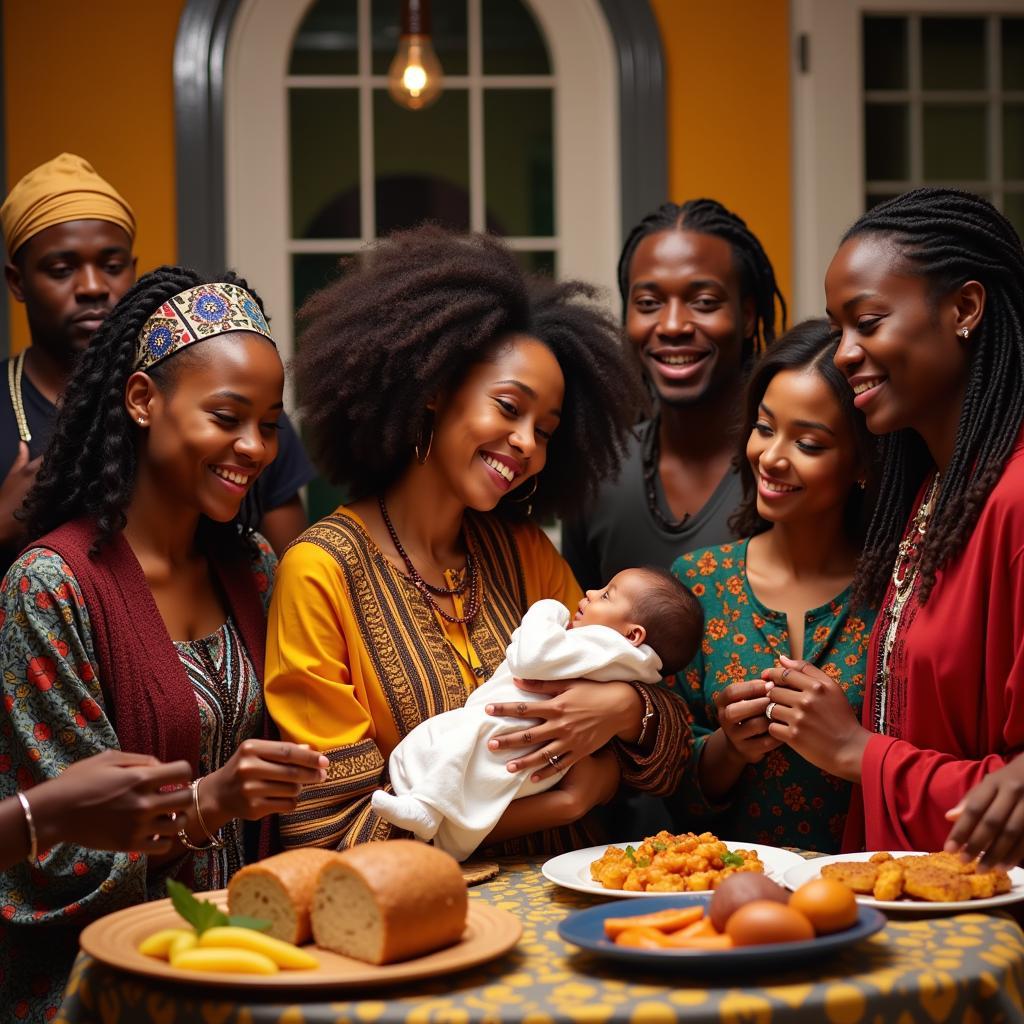Understanding the African Hermaphrodite Narrative
The term “African Hermaphrodite” carries a complex and often misunderstood meaning. It’s crucial to approach this topic with sensitivity and awareness of cultural context, moving beyond simplistic definitions and acknowledging the diverse experiences of intersex individuals across the African continent. This article delves into the cultural narratives, social perceptions, and lived realities surrounding intersex individuals in Africa.
Intersex in Africa: Beyond the Binary
Westernized perspectives often frame intersex as a medical condition, but in many African cultures, it’s viewed through a different lens. Traditional beliefs and spiritual interpretations often shape how intersex individuals are perceived and integrated into society. These interpretations can vary widely across different regions and ethnic groups. Some communities embrace intersex individuals as holding a special spiritual significance, while others may face stigma and marginalization. It is important to remember that the term “African hermaphrodite” is an outdated and inaccurate term. The preferred term is “intersex.”
Challenging Western Narratives of Intersex
The Western medical model tends to categorize intersex as a disorder requiring intervention, often leading to surgeries performed on infants and young children. This approach can be harmful and ignores the individual’s right to bodily autonomy. In many African traditions, however, intersex is not seen as a medical problem but rather as a natural variation of human biology. This perspective challenges the Western emphasis on surgical intervention and encourages a more accepting and inclusive approach.
How Cultural Beliefs Shape Experiences
Cultural beliefs surrounding intersex in Africa are often deeply intertwined with spirituality and ancestral traditions. In some communities, intersex individuals are seen as a bridge between the physical and spiritual realms, embodying both male and female energies. In others, they might be considered sacred or even possess supernatural powers. These beliefs can influence family dynamics and community integration, offering protection and acceptance or, in some cases, leading to isolation or fear.
 Cultural Beliefs and Practices Surrounding Intersex Individuals in Africa
Cultural Beliefs and Practices Surrounding Intersex Individuals in Africa
The giant African land snail is an example of a hermaphroditic animal. Read more about it here: giant african land snail.
The Reality of Living as an Intersex Person in Africa
Despite the diverse cultural narratives, intersex individuals in Africa often face numerous challenges. Stigma, discrimination, and lack of access to healthcare and education are common issues. Many also experience social isolation and difficulty forming relationships. Advocacy groups and organizations are working to raise awareness, combat stigma, and empower intersex communities across the continent. They strive to provide support, resources, and a platform for intersex individuals to share their stories and advocate for their rights.
Navigating Identity and Belonging
For many intersex individuals, navigating their identity within their families and communities can be a complex journey. Traditional gender roles and expectations can create pressure to conform, leading to internal conflict and a sense of not belonging. However, some intersex individuals embrace their unique identity and actively challenge societal norms, becoming powerful advocates for inclusivity and understanding.
Another interesting hermaphroditic creature is the African giant snail Achatina achatina. Learn more about it here: african giant snail achatina achatina. Similarly, the African cubera fish also exhibits this unique biological characteristic: african cubera fish.
Conclusion: Embracing Diversity and Challenging Stigma
Understanding the “African hermaphrodite” narrative requires acknowledging the diverse cultural perspectives and lived experiences of intersex individuals across the continent. Moving beyond Westernized medical models and embracing traditional beliefs that celebrate difference is crucial. Continued advocacy and education are essential to combat stigma, promote inclusivity, and ensure that intersex individuals in Africa are afforded the same rights, respect, and opportunities as everyone else.
FAQ
- What is the correct term to use instead of “African hermaphrodite”? Intersex is the preferred term.
- Are all intersex individuals in Africa treated the same way? No, experiences vary greatly depending on cultural beliefs and regional practices.
- What are some of the challenges faced by intersex people in Africa? Stigma, discrimination, lack of access to healthcare and education are common issues.
- Are there any organizations working to support intersex communities in Africa? Yes, several advocacy groups are working to raise awareness and empower intersex individuals.
- How can I learn more about intersex issues in Africa? Researching online, connecting with advocacy groups, and reading personal narratives can provide further insights.
- What are some common misconceptions about intersex people? Many people mistakenly believe intersex is a choice or a lifestyle, when it is a natural biological variation.
- How can I be an ally to the intersex community? Educating yourself, challenging stigma and discrimination, and supporting intersex-led organizations are important steps.
For further support, please contact us: Phone: +255768904061, Email: kaka.mag@gmail.com or visit us at Mbarali DC Mawindi, Kangaga, Tanzania. We have a 24/7 customer support team.


